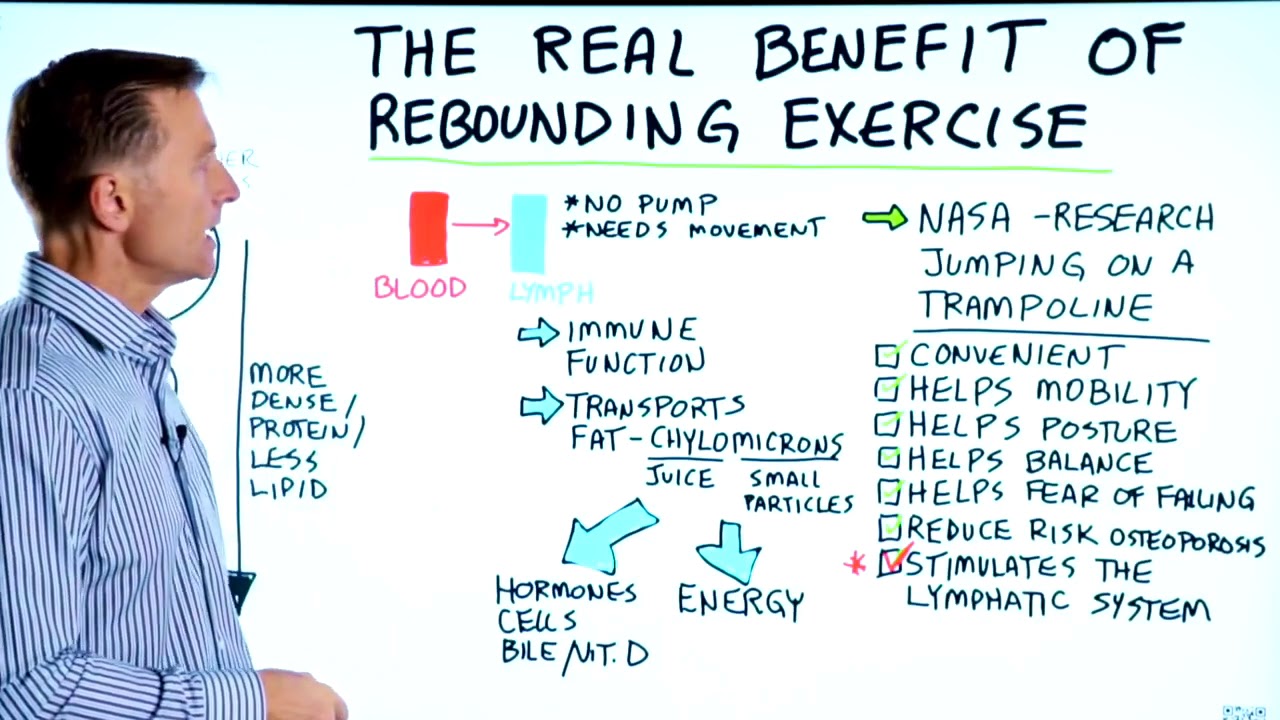Benefits of Rebounding
Rebounding, also known as trampoline exercise, has gained immense popularity in recent years due to its numerous health benefits. This low-impact workout involves jumping on a mini trampoline, and it offers a wide range of advantages for both your physical and mental well-being. In this article, we will explore the various benefits of rebounding and why it is an excellent choice for individuals of all fitness levels.
Cardiovascular Health
Engaging in rebounding exercises is an effective way to improve your cardiovascular health. Jumping on a trampoline increases your heart rate and enhances blood circulation throughout your body. This helps to strengthen your heart muscles, lower blood pressure, and reduce the risk of cardiovascular diseases such as heart attacks and strokes.
Weight Loss and Toning
If you are looking to shed some extra pounds or tone your muscles, rebounding can be a fantastic addition to your fitness routine. The constant jumping motion engages multiple muscle groups, including your legs, core, and arms. This results in improved muscle tone and increased calorie burn, making rebounding an effective tool for weight loss and overall body toning.
Improved Lymphatic System
One of the unique benefits of rebounding is its positive impact on the lymphatic system. The lymphatic system plays a crucial role in removing toxins and waste from your body. Rebounding helps to stimulate the lymphatic flow, aiding in the detoxification process and boosting your immune system. Regular rebounding can contribute to a healthier and more efficient lymphatic system.
Joint Health and Injury Prevention
Unlike high-impact exercises like running or jogging, rebounding is gentle on your joints while still providing an effective workout. The trampoline’s shock-absorbing surface reduces the impact on your joints, making it an ideal exercise for individuals with joint pain or those recovering from injuries. Rebounding helps to strengthen the muscles around your joints, improving stability and reducing the risk of future injuries.
Increased Bone Density
As we age, maintaining strong and healthy bones becomes increasingly important. Rebounding is a weight-bearing exercise that helps to improve bone density and prevent conditions like osteoporosis. The repetitive jumping motion stimulates bone growth, making your bones stronger and more resilient. Regular rebounding can be a valuable addition to your bone-strengthening regimen.
Stress Relief and Mental Well-being
Engaging in physical activities like rebounding releases endorphins, which are known as “feel-good” hormones. These hormones help to reduce stress, anxiety, and symptoms of depression, promoting a positive mental state. Rebounding also allows you to focus on the present moment, serving as a form of meditation and relaxation. Incorporating rebounding into your routine can contribute to improved mental well-being and overall happiness.
Balance and Coordination
Rebounding requires balance and coordination to maintain stability on the trampoline surface. Regular practice can help improve your balance and coordination skills, leading to better overall body control. Enhanced balance and coordination can have a positive impact on your daily life, reducing the risk of falls and improving your performance in other physical activities.
Convenience and Fun
One of the great advantages of rebounding is its convenience and enjoyment factor. Unlike many other exercises, rebounding can be done in the comfort of your own home with a mini trampoline. You can easily incorporate it into your daily routine, making it accessible for individuals with busy schedules. Additionally, rebounding is a fun and engaging workout that can help you stay motivated and committed to your fitness goals.

Overall, rebounding offers a wide range of benefits for your physical and mental well-being. From cardiovascular health and weight loss to improved lymphatic system and joint health, the advantages of rebounding are truly remarkable. So, why not give it a try? Incorporate rebounding into your fitness routine and experience the positive impact it can have on your overall quality of life.
Frequently Asked Questions about the Benefits of Rebounding
1. What is rebounding?
Rebounding refers to the act of jumping on a mini trampoline, which provides a low-impact cardiovascular exercise.
2. What are the benefits of rebounding?
Rebounding offers numerous benefits such as improved lymphatic system function, increased bone density, enhanced balance and coordination, and improved cardiovascular health.
3. How does rebounding improve the lymphatic system?
When you rebound, the up-and-down motion helps to stimulate the lymphatic system, which is responsible for removing toxins and waste from the body. This can lead to a stronger immune system and improved overall health.
4. Can rebounding help with weight loss?
Yes, rebounding can aid in weight loss as it is a form of cardiovascular exercise that burns calories and increases metabolism. Regular rebounding sessions, combined with a healthy diet, can contribute to weight loss goals.
5. Does rebounding help in reducing cellulite?
Rebounding can help reduce the appearance of cellulite by improving blood circulation and lymphatic drainage, which can help to break down fat deposits under the skin.
6. Is rebounding suitable for people with joint issues?
Rebounding is a low-impact exercise that puts less stress on the joints compared to activities like running or jumping on hard surfaces. However, it is always recommended to consult with a healthcare professional before starting any new exercise regimen.
7. How often should I rebound to experience the benefits?
To experience the benefits of rebounding, it is recommended to rebound for at least 15-20 minutes, 3-5 times a week. However, you can start with shorter sessions and gradually increase the duration as your fitness level improves.
8. Can rebounding help with stress reduction?
Yes, rebounding can help reduce stress by releasing endorphins, which are known as “feel-good” hormones. The rhythmic bouncing motion can also provide a calming effect and help improve mental well-being.
9. Can rebounding improve posture?
Rebounding exercises engage the core muscles, which can help improve posture over time. By strengthening the muscles that support the spine, rebounding can contribute to better alignment and posture.
10. Are there any age restrictions for rebounding?
Rebounding is generally suitable for people of all ages. However, it is advisable to consult with a healthcare professional, especially for individuals with certain medical conditions or injuries.




